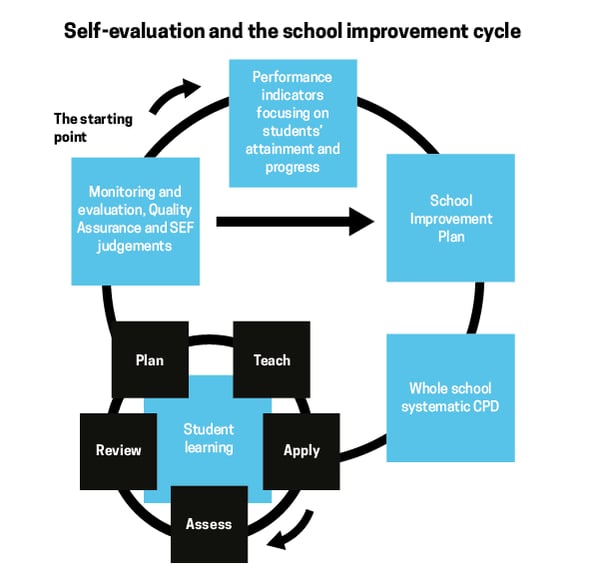Five practical tips for using school self-evaluation to drive improvement
Self-evaluation contributes to school improvement by providing an accurate assessment of how well your school is performing and crucially what needs to be done next. Done well, it helps identify improvement priorities and leads to evidence-based school improvement planning, which results in clear benefits for pupils.
Here’s five things you can do to ensure your self-evaluation is effective in driving school improvement.
1. Complete the school improvement cycle
Effective self-evaluation must be firmly embedded in your school improvement planning cycle, to properly support continuous improvement. All elements of the cycle need to be in place; leaving any one of them out undermines the impact and strength of the model

2. Engage at every level
Self-evaluation must involve all key staff and offer insight and analysis for improvement. From teaching staff to middle and senior leaders, it must garner opinion from across the school to provide an accurate reflection of practice.
Monitoring and evaluation will not please everyone. How and why it is achieved is far more important than what is tackled. Clear communication of the purpose and need for evaluation is essential. It must involve trust between colleagues and have a common-sense approach from middle and senior leaders.
3. Look at your weaknesses first
Review the Ofsted descriptors with key staff. Ensure your middle leaders understand and can evidence the criteria being met. It may sound odd but start by looking at the ‘inadequate’ descriptors. Tick these off first to be satisfied that there are no issues.
Spending time on this with senior and middle leaders will pay dividends. You will all know your school so much better.
4. Link to performance management
Link self-evaluation to performance management as this will ensure effective monitoring of staff in delivering the school’s priorities. A programme of quality continuous personal development (CPD) will result from this robust approach.
5. Create a culture of high challenge, low threat
Quality assurance systems need to be ingrained throughout your institution with a culture of high challenge, low threat. Note and celebrate the things that have gone well and encourage colleagues to share their concerns about their own practice. This leads to an increase in self-esteem and trust. Staff are quicker to own up to their mistakes and identify ways to improve through coaching and CPD support.
For more information, download our quick reference guide:
Effective school self-evaluation: a practical guide to drive improvement
In it Roger Gilbert uses his experience as a Principal, school leader and Department for Education Advisor to highlight the key documents you need to read, the right questions to ask, the data you need to collect, the people to involve and some of the common pitfalls.
Tribal’s school improvement partners can provide external validations of your self-evaluation processes and judgements.
Get in touch:improvement@tribalgroup.com
TOPICS:
SHARE THIS ARTICLE:



